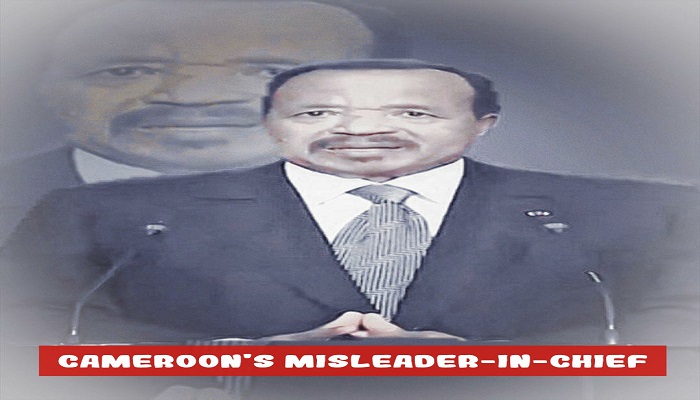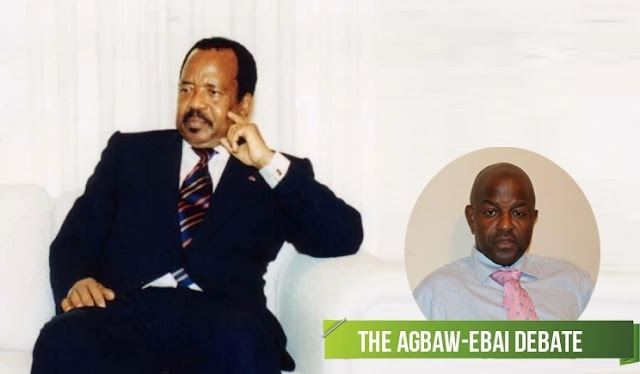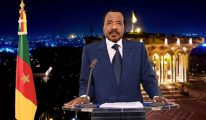Privacy Overview
This website uses cookies so that we can provide you with the best user experience possible. Cookie information is stored in your browser and performs functions such as recognising you when you return to our website and helping our team to understand which sections of the website you find most interesting and useful.


















10, April 2017
The Doctrine of non-violence and liberation struggles 1
The first act of revolutionary violence, that comes easily to mind, is the destruction of the God-thought- sinful-world with a 40 day down pour of a killer rain. That is if we can neatly by-pass all individual acts of punishment from the curse of Adam and Eve in the Garden of Eden to the water destruction of the world. Noah in this case, like it would be through-out God’s interaction with man, was the chosen one asked to build an ark of specific dimensions, where he would secure what existed before the flood for posterity. This in effect became the genesis of mass-destruction of what God himself has created. The appearance of the rainbow in the sky remains a living testimony of this act, although its promises of “never again”, would stand inconsequential at the moment for the purpose of the present analysis. The act was committed and destruction through violence, to march human disobedience and immorality against God was recorded.
Biblical Examples
During the period of Jewish bondage in the land of Pharaoh, a time came when God wanted his chosen children of Israel out of Egypt. The choice this time fell on Moses, a man whose childhood had been secured under very mysterious circumstances and who was at the time on exile for a violent act he committed that was by all means, but in words, condemned by God. Moses was to negotiate first peacefully the exit of the children of Israel and when he expressed his skepticism on this, God promised to teach Pharaoh a lesson should he prove headstrong to peaceful negotiations. When peaceful dialogue and consultations didn’t work, God resolved to the use of violence and force. The methods ranged from epidemics to outright killings.
During the 40 years in the wilderness, God used violence to get the liberated Jews to obey Him. The old hands including Moses, perished before they could get to the Promised Land. Getting to the promise land, they had to use violence prescribed by God. Violently through the hands of God, Sodom and Gomorrah were wiped off the surface of the earth for their sins and pervasions. Not even Abraham’s mediation could save them. All along the old testament of the bible, we come across instances of violence by God to solve one problem or another. Moses crowned it all when he prescribed an eye for an eye and teeth for tat. Holy wars were fought violently with the direct participation of God to free his so-called chosen race (or was it tribe) from bondage or impurity.
A new social order with greater spiritual inclination was promised and given. Then entered Jesus Christ, a spiritually molded child who would have cost his virgin mother her marriage to her carpenter lover and her life according to the Jewish culture. This is typical with God: to violate the norms of some societies in order to get His point across, that salvation is only through absolute obedience to Him but in such examples as the virgin birth, little consideration is given to possibilities of human initiations or skepticism of such divine acts that only go further to widen the spiritual gap between humanity and God. According to the doctrine of the new social order, this child of the virgin birth was to carry all alone on his head the burden of all the sins of humanity. To this he was to pay with his life. Before death could occur, Jesus had used both violent and non-violent approaches in his spiritual revolutionary mission. Instances of his non-violent approach can be mainly noted in his vast differences of application of the scriptures with the scribes and Pharisees, his teachings to the multitudes eg the Beatitudes, sermon on the mount, the 70x 7 forgiveness principles, the turning of the other check etc. But it must be noted that it was not in every situation that Jesus Christ practiced non-violence. For example: Jesus violently destroyed a herd of innocent pigs when he was angry with the demons he had cast from a possessed person. Jesus violently beat people out of the temple when they were doing their commerce in the house of God. Jesus violently turned his friends into pigs when their mother lied to him. The killing of Ananias and Saphira over the sale of their land was another instant of Christ-like violence. Not only did Jesus use physical violence, he also used psychological violence; like his answer when he was told his mother and brothers were looking for him. Even his death brought a lot of violence. As soon as he gave up the ghost, the grave were the dead were buried, opened and there was a terrifying storm all over. There is no instant in the bible where Jesus, not God for that matter, advised the soldiers to leave or not to join the army because they use violent methods in solving problems. The supposed Biblical condemnation of the use of violence in seeking liberation and justice, needs a serious reviewing by those who have out rightly condemned the approach thus far on the basis of scriptural interpretations.
The modern acceptable approach to revolutionary struggles and the seeking of justice has been non-violence. The question we must ask here is, non-violence acceptable by whom and to what end? The bitter fact is, it is not the church nor any genuine moral organization that accepts and preaches the non-violent approach because the church and these bodies if true to themselves, should be in the frontline of these struggles. It is sadly the perpetrators of violence and injustice that accept and promote their non-violent struggles are not threats to these political demagogues and moral lepers who know in themselves that the way they have structured things, they would find themselves presenting a balance sheet to whoever confronts them non-violently.
THE EXAMPLES OF GHANDI, MARTIN LUTHER KING, JR AND MANDELA
We can quickly name some of the world’s recognized great names of the doctrine of non-violence. Gandhi comes to mind, the one from whom Martin Luther King Jr. gathered his much needed inspiration. Gandhi believed so much in nonviolence that he always had to physically risk his own life through periods of wet and dry hunger strikes when there was apparent violence. But Gandhi’s case should be viewed with care because even though the Indians had internal religious problems and that of the untouchables, they had a common problem of independence from the British who were arrogantly flying their union jack with impunity over local Indian territory. Of course, the undisputable happened in Indian immediately independence was achieved. The center that nonviolence pretended to hold together gave way to what was more realistic and natural. The man of nonviolence was violently taken out of the scene. Practically things took the place of theoretical things.
Martin Luther King Jr. who was brought to the scene through an invitation to address a black rally, also benefited from the deplorable American racial problems of his time. Martin was successful in rallying the blacks but he was not successful in controlling violence on both sides. In all earnest, if people like King recorded degrees of recognition, credit must be given to controversial black leaders like Malcolm X, who neither preached violence nor denounced it but stated the rights of the blacks to defend themselves against aggressions and attacks from the whites. The existence of people like Malcolm X, Marcus Garvey etc. placed the white racists in the unfortunate position of choosing between two evils and their choice fell on Martin, whose approach was less of a threat to them. Of course and again, violence took them out into immortality.
Mandela can preach nonviolence today but what had given him and the A.N.C. much impact is his more than two decades refusal to sell his birthright by renouncing violence to the devil Botha. If Mandela is today Mandela and ANC, it is thanks to the violent struggle Oliver Tambo put up in exile while Nelson was in jail. Even Gandhi would accept that whatever approach is adopted for any struggle for liberation and justice would depend to a large extend on the moral structure of its society and the state of it governance. Nonviolent approach must not be viewed as the lone universally approach and violence should not be seen as a shun option that must be universally unacceptable. Just as it has always been the case, all disciples of nonviolence have always ended up victims of violence.
Tracing the supporters of nonviolence gives the clear picture of human hypocrisy. The Americans and their western friends would tell you of their support for nonviolence. This is as far as their interest is not threatened. If the camp of nonviolence is a camp that would morally disturb their imperialist exploitation of the area, they would arm the violent side to destroy the nonviolent crusaders. If a violent approach is used to disturb their interests, the pretentious nonviolent supporters would match violence with violence. So the moral custodians of nonviolence, as long as their interests are at stake, would use violence against nonviolence and violence against violence. To these guys, the African crusaders for justice and total independence must limit their means of success by appeasing the dubious western capitalists with an ill supported doctrine of nonviolence. Bhutulezi, the leader of the Zulu Inkatha was always hailed by the white racists minority government of South Africa and the capitalist racist western world for his socalled nonviolent constructive engagement in solving the long degrading racist problem country, while at the same time the racist white world armed him to brutally murder militants of other black anti-racist movements.
These same apostles of nonviolence, finance and arm brutal dictators in Africa and third world countries to ruthlessly massacre innocent armless citizens and turn around to tell African revolutionaries to use endless dialogue and consultations to be permitted to bury even their dead, victims of cold blooded violence from the flag bearers of nonviolence.
By Christmas Atem Ebini